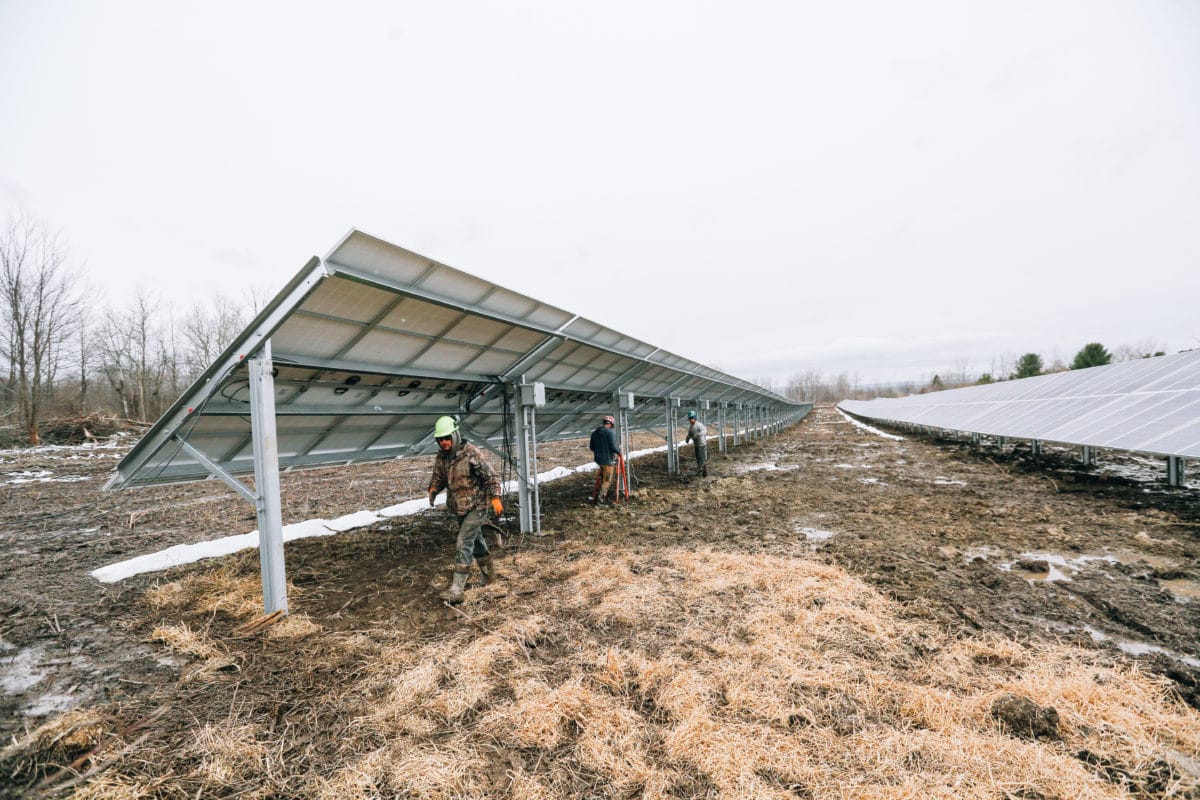From pv magazine Germany
In 2020, around 12 GW of unsubsidized photovoltaic and wind power projects were announced in Europe, according to German consultancy Enervis.
Compared to 2019, there was a decrease of around 50% in PV projects and a 30% drop in offshore and onshore wind parks, according to the updated analysis document Status quo: Market Parity Report of PV and Wind Onshore in Europe.
According to the analyst, Spain remains the largest market for solar PPAs, with a project pipeline of 2.18 GW, which represents more than half of the announced subsidy-free photovoltaic projects in Europe. Germany and France are the second and third largest markets with 786 and 392 MW, respectively.
The main reason why the PPA market, which was just gaining momentum in Europe, was massively slowed down, at least temporarily, in 2020, was the coronavirus pandemic and its effects on the electricity markets. When the first lockdowns began, in March 2020, wholesale electricity prices plummeted, although they recovered over the course of the year. Across Europe, there was a decline of 25% over the course of the year. Furthermore, the gas price has fallen by a further 31%. After strong increases for CO2 certificates in 2018 and 2019, the Enervis analysts recorded a stagnation for these prices for 2020. As for the electricity futures, there were already signs of a significant recovery in December 2020, in some cases at a higher level than before the crisis.
Popular content
Enervis also reported that capture prices for photovoltaics and wind power also fell drastically in the past year. In Germany, for example, the capture price of solar fell, on an annual average, to around €0.0246/kWh, while it was €0.043/kWh in 2018. These higher values make it difficult to secure a PPA as the projects are difficult to refinance through electricity sales. However, the analysts expect a short-term recovery in capture prices. However, the relative capture price of photovoltaics decreased significantly in 2020, which was also influenced by very low gas prices.
Enervis saw a significant, increasing presence of negative electricity prices in European countries. In Germany, these were reported 298 times within a year while, in the previous year, there had been 211 occurrences. In many other countries, there were negative electricity prices for the first time, in 2020. The main cause is strong electricity injection from renewable energy systems with a simultaneous sharp drop in demand as a result of the coronavirus lockdown. Negative electricity prices, on the other hand, have a dampening effect on the capture prices, as the plant operators cannot generate any income during these hours.
“An increasing number of European markets [have] the potential to achieve market parity in the next few years, despite temporarily lower capture prices due to the pandemic in 2020. Risks and opportunities of investing in a subsidy-free renewable energy project should be carefully analyzed,” said Enervis analyst Franziska Sicker.
This content is protected by copyright and may not be reused. If you want to cooperate with us and would like to reuse some of our content, please contact: editors@pv-magazine.com.



By submitting this form you agree to pv magazine using your data for the purposes of publishing your comment.
Your personal data will only be disclosed or otherwise transmitted to third parties for the purposes of spam filtering or if this is necessary for technical maintenance of the website. Any other transfer to third parties will not take place unless this is justified on the basis of applicable data protection regulations or if pv magazine is legally obliged to do so.
You may revoke this consent at any time with effect for the future, in which case your personal data will be deleted immediately. Otherwise, your data will be deleted if pv magazine has processed your request or the purpose of data storage is fulfilled.
Further information on data privacy can be found in our Data Protection Policy.